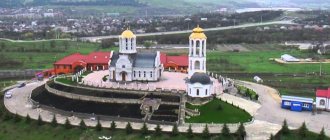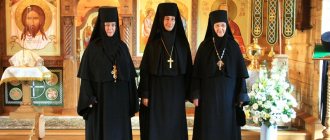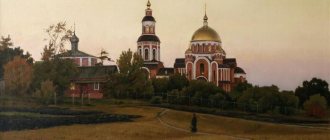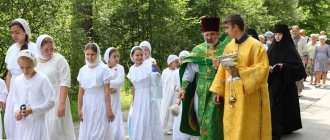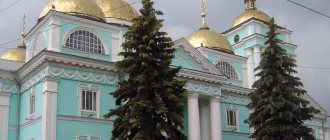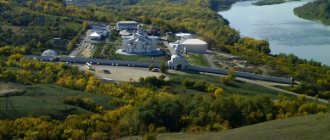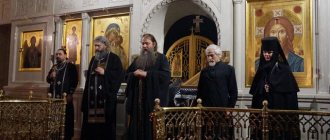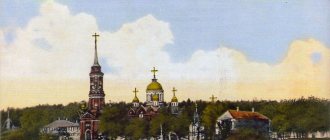Mir
Russia Republic of Crimea village Uchebnoe Toplovsky Holy Trinity-Paraskevievsky Convent Map is loading…
{"format":"leaflet","minzoom":false,"maxzoom":false,"limit":50,"offset":0,"link":"all","sort":[""], "order":[],"headers":"show","mainlabel":"","intro":"","outro":"","searchlabel":"\u2026 \u0441\u043b\u0435\ u0434\u0443\u044e\u0449\u0438\u0435 \u0440\u0435\u0437\u0443\u043b\u044c\u0442\u0430\u0442\u044b","default":"","import-annotation":false,"width ":"auto","height":"350px","centre":{"text":"","title":"""link":"""lat":44.99980000000000046611603465862572193145751953125,"lon": 34.88013000000000118916432256810367107391357421875,"icon":""},"title":"","label":"","icon":"","lines":[],"polygons":[],"circles":[ ],"rectangles":[],"copycoords":false,"static":false,"zoom":8,"defzoom":14,"layers":["OpenStreetMap"],"image layers":[] ,"overlays":[],"resizable":false,"fullscreen":true,"scrollwheelzoom":true,"cluster":false,"clustermaxzoom":9,"clusterzoomonclick":true,"clustermaxradius":80, "clusterspiderfy":true,"geojson":"","clicktarget":"","showtitle":true,"hidenamespace":false,"template":"","userparam":"","activeicon": "","pagelabel":false,"ajaxcoordproperty":"","ajaxquery":"","locations":[{"text":"\u003Cb\u003E\u003Ca href=\"/palomnik/%D0% A2%D0%BE%D0%BF%D0%BB%D0%BE%D0%B2%D1%81%D0%BA%D0%B8%D0%B9_%D0%A1%D0%B2%D1%8F% D1%82%D0%BE-%D0%A2%D1%80%D0%BE%D0%B8%D1%86%D0%B5-%D0%9F%D0%B0%D1%80%D0%B0% D1%81%D0%BA%D0%B5%D0%B2%D0%B8%D0%B5%D0%B2%D1%81%D0%BA%D0%B8%D0%B9_%D0%B6%D0% B5%D0%BD%D1%81%D0%BA%D0%B8%D0%B9_%D0%BC%D0%BE%D0%BD%D0%B0%D1%81%D1%82%D1%8B% D1%. 43e \u0438\u0446\u0435-\u041f\u0430\u0440\u0430\u0441\u043a\u0435\u0432\u0438\u0435\u0432\u0441\u043a\u0438\u0439 \u0436\u0435\ u043d\u0441\u043a\u0438\ u0439\u043c\u043e\u043d\u0430\u0441\u0442\u044b\u0440\u044c\»\u003E\u0422\u043e\u043f\u043b\u043e\u0432\u0441\u043a\u0438\u 0439\u0421\u0432\u044f\ u0442\u043e-\u0422\u0440\u043e\u0438\u0446\u0435-\u041f\u0430\u0440\u0430\u0441\u043a\u0435\u0432\u0438\u0435\u0432\u0441\u0 43a\u0438\u0439\u0436\ u0435\u043d\u0441\u043a\u0438\u0439 \u043c\u043e\u043d\u0430\u0441\u0442\u044b\u0440\u044c\u003C/a\u003E\u003C/b\u003E\u003Ch r /\u003E\u003Ca href= \"/palomnik/%D0%A1%D0%B2%D0%BE%D0%B9%D1%81%D1%82%D0%B2%D0%BE:%D0%90%D0%BD%D0%BD %D0%BE%D1%82%D0%B0%D1%86%D0%B8%D1%8F\" title=\"\u0421\u0432\u043e\u0439\u0441\u0442\u0432\u043e:\u0410\ u043d\u043d\u043e\u0442\u0430\u0446\u0438\u044f\»\u003E\u0410\u043d\u043d\u043e\u0442\u0430\u0446\u0438\u044f\u003C/a\u003E: \u0440\u0430\u0441 \u043f\u043e\u043b\u043e\u0436\u0435\u043d\u043d\u044b\u0439 \u0432 \u043e\u043a\u0440\u0435\u0441\u0442\u043d\u043e\u0441\ u0442\u044f\u0445\u0441\u0435 \u043b\u0430 \u0422\u043e\u043f\u043e\u043b\u0435\u0432\u043a\u0430, \u0440\u0430\u0441\u043f\u043e\u043b\u043e\u0436\u0435 \u043d\u043d\u043e\u0433\ u043e \u043d\u0430 \u0424\u0435\u043e\u0434\u043e\u0441\u0438\u0439\u0441\u043a\u043e\u043c \u0448\u043e\u0441\u0441\u0435 \ u0432\u041a\u0440\u044b\u043c\ u0443. \u041f\u0440\u0438 \u043e\u0431\u0438\u0442\u0435\u043b\u0438 \u0438\u043c\u0435\u0435\u0442\u0441\u044f \u0433\u043e\u0441 \u0442\u0438\u043d\u0438\u0446 \u0430 \u0434\u043b\u044f \u043f\u0430\u043b\u043e\u043c\u043d\u0438\u043a\u043e\u0432.","title":"\u0422\u043e\u043f\u043b\u043e \u0432\u0441 \u043a\u0438\u0439 \u0421\u0432\u044f\u0442\u043e-\u0422\u0440\u043e\u0438\u0446\u0435-\u041f\u0430\u0440\u0430\u0441\u043a \u0435\u0432\u0438\u0435 \u0432\u0441\u043a\u0438\u0439 \u0436\u0435\u043d\u0441\u043a\u0438\u0439 \u043c\u043e\u043d\u0430\u0441\u0442\u044b\u0440\ u044c","link":"" ,"lat":44.99980000000000046611603465862572193145751953125,"lon":34.880130000000000118916432256810367107391357421875,"icon":""}],"image Layers":[]}
44.999867; 34.880271
Russia, Republic of Crimea, Belogorsky district, Zemlyanichnenskoye rural settlement, Uchebnoye village
Uchebnoye village, Republic of Crimea
Russia
Phones:
+79787460968 (office, senior tour guide); +79782084240 (monastery refectory: ordering lunches for excursion groups); +7 978 74 60968 (for questions about the Sacrament of Baptism)
Toplovsky Holy Trinity-Paraskevievsky Monastery
- a convent of the Simferopol diocese of the Ukrainian Orthodox Church (Moscow Patriarchate), located in the vicinity of the village of Topolevka, located on the Feodosiya highway in Crimea. There is a hotel for pilgrims at the monastery.
The village of Topolevka, formerly Greek, was called Toply before the Soviet toponymic reform, hence the name of the monastery. After the October Revolution, the village that formed directly around the monastery was called the village of Michurino, later the village of Uchebnoye.
The monastery was officially established on August 25, 1864, opened on September 25 of the same year, formally closed on April 29, 1923, and reopened in 1993.
History[edit]
Founding of the monastery[edit]
The monastery is located near a spring named after Saint Paraskeva of Rome. According to local legends, it was here that her martyrdom took place, after which a spring with medicinal properties gurgled at the place of execution. In this region of Crimea, long before the establishment of the monastery, the veneration of St. Paraskeva was widespread. The ruins of the Greek churches of St. Paraskeva were located directly at the source, in the village of Toplu, in the village of Ortalan (now Zemlyanichnoye), the Armenian church of St. Paraskeva was built in 1702 and abandoned in 1778.
Even before the founding of the monastery, Konstantina, a Bulgarian woman from the village of Kishlav (now the village of Kurskoye), led a hermit’s life in this place, who was joined by several women, forming a kind of cinnamon. In the middle of the 19th century, after mass migrations of Christians from Crimea in 1778 and Muslims (Tatars and Turks) to the Ottoman Empire after the annexation of Crimea to Russia in 1783, Crimea was sparsely populated, and many Christian churches (Greek Orthodox and Armenian) were abandoned. recovery was quite slow.
The land on which the monastery was opened was donated by Catherine II to her favorite Zakhar Zotov. In the middle of the 19th century, the land was owned by his descendants, sisters Feodora Alekseevna Zotova and Angelina Alekseevna Lambiri (1814-1873). Angelina bought the land from her sister and donated it to establish a monastery. The opening of the monastery was preceded by the construction of a small church of St. Paraskeva near its source, consecrated on the day of remembrance of the Saint on July 26, 1863. The Kiziltash abbot Parfeniy, who was killed in 1866 by the Crimean Tatars and in 2000 ranked among the face of the saints. The first nuns of the monastery were the 9 women who already lived here. The Bulgarian Konstantina was later tonsured a nun under the name Paraskeva.
Construction of the monastery[edit]
In subsequent years, in addition to residential and outbuildings, a hospital with a house church “Joy of All Who Sorrow” was built in the monastery, the Church of St. Paraskeva was rebuilt and expanded, and construction began on the large Holy Trinity Cathedral (designed by V. A. Feldman). The monastery had workshops and exemplary gardening. The successes of the monastery are largely connected with the activities of its abbess Paraskeva (Rodimtseva), who headed the monastery until her death and during the years of its closure. In 2009, Abbess Paraskeva was ranked among the local revered saints. Her solemn canonization in the monastery on July 11, 2010 was performed by Metropolitan Vladimir. The monastery had metochions in Simferopol and Feodosia.
Closing of the monastery[edit]
After the establishment of Soviet power in conditions of persecution of the church, confiscations and requisitions, a labor commune of gardeners was created from the nuns of the monastery. Under this cover, the monastery existed for several more years; formally, the commune grew fruit, but in essence, while caring for the garden, the nuns continued their ritual life. The final blow to the monastery was the decision to liquidate the “Women’s Labor” agricultural association on September 7, 1928. In December 1928, the abbess died. In January 1929, NKVD soldiers forcibly evicted all the nuns on a receipt to return to their previous place of residence. Local residents sent many old and infirm nuns to their homes. The priests and many nuns who led the economic life of the monastery were arrested and died in the camps. At the same time, the unfinished Holy Trinity Cathedral was blown up.
Revival of the monastery[edit]
The revival of the monastery began in the 90s. On August 8, 1992, the first service took place in the central square of the monastery. On June 8, 1993, the charter of the monastery was registered. On December 20, 1994, 10.76 hectares of land and buildings were transferred to the monastery, which in recent years were used by the pioneer camp.
The Legend of Saint Paraskeva
This story happened in the second century AD in the Italian city of Rome. A girl was born into a family of pious Christians, and they named her Paraskeva. The parents raised their daughter according to Christian canons. Having buried her mother and father, Paraskeva distributed her property to the poor and began to preach the Gospel. The Roman Emperor Antonian, could not stand Christians, and having heard about Paraskeva, he decided to force her to publicly renounce.
At first, threats and persuasion were used. Then the torture and torment began: they put a red-hot helmet on the girl’s head and threw her into a cauldron with boiling resin. Vera helped Paraskeva survive. Then the enraged emperor ordered the contents of a red-hot cauldron to be poured over the martyr, but a desperate Christian woman splashed boiling water into his eyes. Antonian instantly became blind and begged for mercy.
Paraskeva restored his sight, so the legend says, and the emperor believed in God and became a true Christian. The holy martyr went to distant lands to preach and enlighten people. In whatever city the girl appeared, incredible miracles happened there.
In Crimea, near the village of Toply, the Christian sermons of Paraskeva of Rome did not please the ruler Tarasius, he ordered the girl to be given over to torture and death. According to legend, in the place where the head of the great martyr was cut off, living water began to ooze from the bowels of the earth. Later, a temple was erected on this site, named after Saint Paraskeva. The relics of the venerable martyr are kept on Athos.
Current state[edit]
Currently, the churches of St. Paraskeva and “Joy of All Who Sorrow” have been restored. A chapel and bathhouse were built near the spring of St. Paraskeva. About 2 km from the monastery there is a source of St. George, where there is also a chapel and a bathhouse; both sources are visited by many people, pilgrims and just tourists. 5 km from the monastery there is the source of the Three Saints; for the convenience of pilgrims, water from it is supplied to the territory of the monastery through pipes. The water of all three sources has healing properties.
Guide to Tolpovsky Monastery in Crimea
The entire church complex consists of the following buildings: the temple of the Holy Martyr Paraskeva, the temple in honor of the icon of the Mother of God "Joy of All Who Sorrow", the cathedral in honor of the Life-Giving Trinity, the Chapel and grave of St. Paraskeva, cave of the Bulgarian Konstantina.
Schedule of services at the Toplovsky Monastery
Relics of the Saint - The remains of Paraskeva are kept in the shrine, which you can approach and pray.
The healing spring of Paraskeva is located, according to legend, at the site of the death of the saint. It is believed to cure diseases of the head and eyes. Many women come to them to ask God to give them a child. A small chapel was built on the source, and the source itself is decorated with granite.
The Spring of the Three Saints is a mountain spring located above the monastery, which flows from the rocks directly into the pond. Designed for dipping. Cures diseases of the nervous system. Also, for those who are not able to reach this source, a water pipeline has been laid from the source to the monastery.
The Spring of St. George the Victorious is a forest spring located two kilometers from the monastery. There are two open and covered baths, divided into women's and men's areas. Diseases of the joints and musculoskeletal system are cured. Near the source there is a small chapel and a bell tower, which anyone can ring after plunging into the water.
Temple “Joy of All Who Sorrow”, © Marina Stepanova
Patronal holidays[edit]
Day of the Holy Trinity
— 50th day after Easter
Paraskeva Toplovskaya, Rev.
— July 11, December 16
Paraskeva of Rome, Venerable Martyr
- 8 August
Dormition of the Blessed Virgin Mary
- August 28
Icon of the Blessed Virgin Mary “Kazan”
— July 21, November 4
Icon of the Most Holy Theotokos “Joy of All Who Sorrow”
— November 6
Michael, Archangel
— September 19 (memory of the miracle in Khoneh), November 21 (cathedral)
Construction of the first temple
Toplovsky Holy Trinity Paraskeivievsky Monastery was built on the land of the Zotov sisters. When it became known that they were going to build a convent near the village of Toplu, the Zotov sisters, who owned the village and surrounding lands, took an active part in the creation of the monastery. They donated half of their income to the monastery and bequeathed 230 acres of land after their death to the property of the women's prayer community.
The paperwork took 4 years, and funds for building a church near the source were found quite quickly. The whole world collected money and began construction in May 1863; all work was completed two months later. Church supplies, utensils and vestments of priests were obtained from surrounding churches, bells were delivered from Simferopol. The opening of the temple was timed to coincide with the day of remembrance of the Venerable Martyr Paraskeva-Friday; the opening and consecration ceremony was performed by Archbishop Alexy.
The Toplovsky Monastery received permission for its establishment in August 1864, and the opening took place a month later. Seven sisters already lived in the monastery. The monastery's charter was written for them and an abbot was appointed who had to choose an abbess. The process of transferring the land to the Zotov sisters turned out to be protracted, so nothing was built on the territory for two years. The sisters lived in dug-out dugouts. When all the issues were settled, the temporary management of the life of the monastery was entrusted to the nun Nadezhda. She managed to organize the first building - a one-story cell building for the sisters.
Contacts[edit]
Address:
297652, Republic of Crimea, Belogorsky district, village. Educational (Verkhnyaya Topolevka).
Directions:
- From Simferopol:
- By car: Toplovsiy Monastery is located 70 km from Simferopol in the Feodosia direction. You should get to the village. Topolevka, passing the city of Belogorsk, before reaching the city of Stary Krym. In the village of Topolevka, as you move towards the right, there will be a sign and a turn towards the monastery. From the turn to the monastery it is 1.5 km.
- On your own: in the area of the Simferopol railway station there is a Bus Station, from where buses depart in the direction of Feodosia, Sudak, Koktebel, Kerch. Travel is issued to the village of Topolevka, if through the ticket office there are no nearest flights to the village of Topolevka, take a ticket to the village of Grushevka with a request to the driver to make a stop at the turn to the monastery along the village of Topolevka. From the stop to the monastery you will still have to walk or drive 1.5 km on passing transport.
- If you get from Feodosia, Sudak, you need the direction to Simferopol. Along the route: before reaching the city of Belogorsk, after the city of Stary Krym. In the village of Topolevka there will be a sign to the monastery; as you go, on the left, turn to the monastery. From the turn to the monastery it is 1.5 km.
Phones:
+79787460968 (office, senior tour guide); +79782084240 (monastery refectory: ordering lunches for excursion groups); +7 978 74 60968 (for questions about the Sacrament of Baptism)
Call times:
from 11:00 to 14:00 and from 15:00 to 17:00 Moscow time.
Email:
How to get to the Toplovsky Monastery
Thanks to the nearby highway, it is not difficult to get to the Toplovsky Monastery. Moving from both Simferopol and Feodosia, you need to go to the village of Topolevka, where there will be a corresponding asphalt turn to the south with a sign. A couple of kilometers up the road - and you are in the silence of the monastery, which is sometimes disturbed by singing, the ringing of bells and the quiet conversations of visitors. You need to pay attention to the dress code allowed on the territory of the Toplovsky Monastery. Women are prohibited from visiting the monastery in trousers and with their heads uncovered. Visitors of any gender must cover their shoulders and hips with clothing. Divine services are held daily, from Tuesday to Thursday akathists with a prayer service are served.
Toplovsky Monastery is a quiet, pleasant place that promotes contemplation and relaxation of the soul. Any Orthodox Christian should visit one of the main shrines of the Crimean peninsula, which survived such terrible times, but was reborn again to the joy of believers. You should definitely take a swim in the famous baths, the cold water of which will refresh your body and clear your thoughts.
olegman37
Pilgrim[edit]
Before visiting the monastery, carefully read:
- rules of conduct
- living conditions in the monastery
as well as information:
- about excursions
- lunches at the monastery
Sanitary days for the font of St. Paraskeva are Monday, Thursday, January 17, August 6 and 7.
Sanitary day for St. George's font is Friday.
Frequently asked questions about the hot tub
Where to stay[edit]
There is a hotel for pilgrims at the monastery. Hotel accommodation is possible for up to 3 nights, donation - 400 rubles/night. Telephone:
+7 978 74 60 841. See more details
on the monastery website
.
Schedule of services[edit]
See the current schedule of services on the monastery website
.
Bulgarian Konstantina
The Toplovsky Monastery in Crimea is a kind of fulfillment of the dream of the Bulgarian girl Konstantina. One unremarkable day, amid worries and troubles, she heard the voice of God and left her father’s shelter, settling in the Kiziltash cave for seven whole years in prayer and solitude. With the appearance of pilgrims in her area, she moved to Topla, where she dreamed of a wonderful monastery near a healing spring.
Konstantina not only prayed for the establishment of a monastery, but took action - she collected money from the surrounding villages, asking for alms. Having collected a certain amount, it was possible to build a small chapel in which the nuns of the future monastery held prayer services. The first organizer herself lived until the end of her days within the walls of the Toplovsky St. Paraskevievsky Convent.
Just before her death, in 1874, being in old age, she took monastic vows under the name Paraskeva and was buried not far from the monastery walls in the forest. Over her grave, the sisters erected a modest obelisk, which reminded of the first prayer woman and worker for the good of the common cause. Konstantina's grave was destroyed and her burial place was lost, but her feat in the name of God was preserved in people's memory, monastic chronicles and in the form of two Crimean monasteries. The Toplovsky St. Paraskeevsky Monastery and the Kiziltash Stefano-Sourozh Monastery owe their appearance to her.
After the revolution
The new social system and the renunciation of faith at the level of state policy brought dramatic changes to the Toplovsky convent. In 1922, gold and silver church utensils were confiscated from the monastery for the benefit of the hungry. Since 1923, the liquidation of several Crimean monasteries began, including the Toplovsky convent, but the situation was saved by a magnificent orchard. Due to the fact that the nuns kept all the buildings and territory in perfect condition, and the garden brought record harvests, it was decided to transfer all the property and land to the labor artel, where the main forces were represented by the nuns.
The Toplovsky St. Paraskevievsky Monastery continued to exist in an altered state, and in 1924 it was decided to close the existing churches; the restored Armenian church on the top of the mountain was transferred to open a museum. A commission arrived at the artel and, having examined the situation, came to the conclusion that the work collective was led by nuns, the monastery rules were being observed, and no one was using new books in the library. For these reasons, the Paraskevievsky Monastery was finally closed, the nuns were dispersed, some were sent to Simferopol, and a state farm called “Bezbozhnik” was established.
Reviews
For many visitors, the Toplovsky Monastery was a discovery. Reviews about it are only positive. Tourists talk about the special atmosphere of peace that reigns in the monastery, the purity and freshness of simple joys. Those who have come to the monastery more than once are strongly advised to immerse themselves in all three sources in compliance with all recommended rules. Pilgrims praise the sisters, who give tours of the monastery, telling not only its history, but the chronicle of the entire region and surrounding villages.
Most visitors recommend staying for a few days to experience all the beauty and leisurely monastic life, and to become part of the common cause and spirit. You can stay in a hotel at the monastery for three days; for a longer prayer stay, the blessing of the abbess is required. There are no negative reviews about the monastery; everyone recommends strictly adhering to the dress code, which is approved by the charter, and be sure to purchase fresh bread, icons and much more that the Toplovsky Monastery offers.

